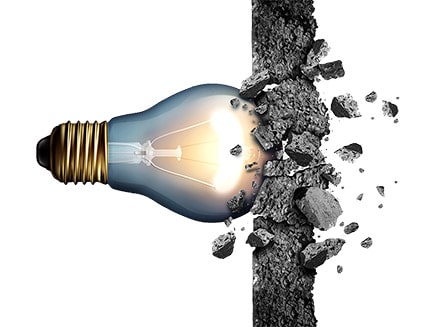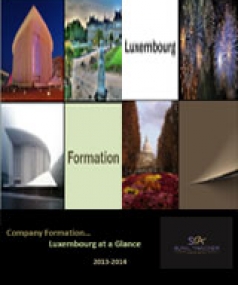Content Creation and the Digital Millennium Copyright Act’s Applicability
 Since the introduction of the Digital Millennium Copyright Act (DMCA) in 1998, there have been sweeping changes to the realm of content creation.
Since the introduction of the Digital Millennium Copyright Act (DMCA) in 1998, there have been sweeping changes to the realm of content creation.
Understanding the DMCA
The Digital Millennium Copyright Act (or DMCA) is a contentious statute passed by the United States legislature in 1998 by then-President Bill Clinton. The aim of the DMCA is to strike a balance between the needs of copyright owners and consumers by investigating any copyright infringement that occurs in the modern world.
The DMCA was created to control digital media and address the copyright issues that the digital world is facing. The DMCA not only investigates copyright infringement challenges that people face on the internet, but also strengthens sanctions for violators.
Several scholars criticized the DMCA in its original form, believing that it would significantly affect the US IT industry's growth. Since widespread opposition, the legislation was revised many times to include several provisions, but several countries still have their own interpretation of the legislation.
The DMCA’s Jurisdiction
Considering that the DMCA is part of the US copyright law, it is only applicable to websites published in the US. Any websites hosted in the United States are required to follow the legislation. As a result, even though the copyright owner is based outside of the United States, they will also issue a DMCA warning if the hosting website is.
Moreover, it is notable that many hosting providers and enterprises, despite being located outside of the United States, follow their own copyright laws and often sign DMCA removal requests to escape legal repercussions in their home country.
Furthermore, most sites hosted in countries that are members of the World Intellectual Property Organization (WIPO) follow the Digital Rights Management (DRM) rule and respond to DMCA takedown notices. Approximately 200 countries have ratified the WIPO treaty at this period.
Fair Use and its Applicability Under the DMCA
Fair Use refers to the freedom to use patented works under such terms without the consent of the copyright owner. The following are examples of constitutionally allowable uses of copyrighted works that come into the Fair Use category. They could be commentary, research, or news reporting. Fair Use encourages ingenuity, and those who use copyrighted works for the reasons mentioned above will not face copyright infringement charges.
The Qualifiers to Assess Possible Fair Use Infringement -
The possible infringement of fair use can be assessed based on the following pointers.
- The copyrighted piece's content
- The copyrighted pieces intend to function and purpose.
- The substance of the copyrighted piece.
Notices Under the DMCA
Notices can take many forms; however, the most prevalent under the DMCA is the DMCA takedown notice informs a company, search engine, Internet service provider, or web server that the content they are hosting or linking to infringes on a copyright.
The copyrighted content should be removed as soon as possible by the corporation or website that receives the note. If they do not delete the content in question, the ISP will take it down forcefully. However, when serving a DMCA takedown notice, you may encounter difficulties if the website hosting the copyrighted content is not based in the United States or another country that meets the DMCA or copyright laws.
Is Prior Registration a Prerequisite to Issuing a Takedown Notice
Prior registration of copyrighted work is not a prerequisite towards issuing a takedown notice. More specifically, as soon as you make tangible content, it becomes your intellectual property, and you own the rights to it, allowing you to file a DMCA note.
Often people upload images, photographs, or written content to the internet without registering with the copyright office, but they retain proprietary rights to the material and will issue a DMCA warning if their content is used illegally.
In the event that the person who submitted the notice gets a counter-notification alleging that no copyright violation occurred, they have 14 days to file a complaint. Likewise, if one wants to file a copyright infringement case and seek punitive compensation, they must first register. For the sake of its defence, DMCA takedown requests may be submitted for any unregistered content.
Understanding the Safe Harbour Concept
 The phrase "DMCA safe harbour" refers to a clause of the Digital Millennium Copyright Act that exempts Online Service Providers (OSP) and other internet intermediaries from direct copyright infringement. More specifically, there are four harbours under information storage, system caches and digital networks.
The phrase "DMCA safe harbour" refers to a clause of the Digital Millennium Copyright Act that exempts Online Service Providers (OSP) and other internet intermediaries from direct copyright infringement. More specifically, there are four harbours under information storage, system caches and digital networks.
Moreover, the aim of establishing DMCA safe harbours is to extend the internet while also improving the efficiency and range of resources available. It was not practical to do it by limiting Internet Service Providers' responsibility (ISPs).
Likewise, copyright infringements may have occurred as a result of ISPs rendering copies of copyrighted material for the purpose of increased speed, hosting websites, or merely leading traffic to pages that could contain infringing content. Likewise, as a result, ISPs and places that fall under one of the safe harbour groups have reduced responsibility to mitigate these issues and to improve the reliability and extension of the internet.
Posting a DMCA Takedown Notice, and its Specifics
A DMCA takedown notice may be posted through a variety of outlets interested in the infringed material's publication. To this note, the simplest method is to contact the site's owner and request that your copyrighted works be removed. People usually answer by removing the copyrighted content from their site to prevent any legal repercussions. On their website, you will normally find contact details or a contact form.
Likewise, an individual should submit a signed DMCA submission to their hosting company; if the owner refuses, they will respond to the DMCA notification in accordance with their policies.
Alternatively, if the provider validates your request, then it has the power to either remove or disable links to the infringing material right away. Likewise, a DMCA takedown request can also be filed through Google, in addition to contacting the website's hosting company.
Likewise, an applicant must have the URLs of both your original content and the infringed material after entering your contact details. If you succeed, you can prevent the infringing website from receiving further attention from Google's search engine.
Receiving a DMCA Notice and Steps to Follow Thereafter.
A content creator that either hosts or maintains websites or publish any material online would receive a DMCA removal notice. In the event of being guilty of the claim, it is imperative to correct the error by locating and taking down the infringing material.
Likewise, if an individual hosts several pages with several users uploading and exchanging content, there is a good chance that copyright infringement was done by them, and you were the next reasonable person to call. In such a case, the infringing material must be taken down as soon as possible.
Alternatively, another possibility is that you knowingly used proprietary work under the Fair Use guidelines. If that is the case, get in touch with the notifier and tell them about the project you used their proprietary material for. It is likely that you will resolve this situation and reach an understanding with the copyrighted content's holders.
DMCA Counter Notice’s
To this end, you can give a counter-notice to the original notifier if a party has not committed copyright infringement and has refused to respectfully resolve the problem with the person who sent the notice.
Moreover, aside from the contact information, the counter-notice should contain the material that was deleted as of a result of the DMCA takedown notice. Furthermore, you must declare under penalty of perjury that you did not violate any copyrights and that the material was deleted in error.
As a result, by default, you consent to the 'service procedures' from the notifier by filing a counter-notice. This indicates that you are aware that filing a counter-notice will result in a lawsuit. Likewise, when the complainant gets a counter-notice, he or she will either abandon the takedown order or file a complaint within 14 days. When filing a counter-notice, be extra careful and optimistic, as it might lead to a lawsuit.
Social Media Platforms and the DMCA
Twitch has had to deal with the harsh realities of DMCA enforcement and the balancing act of producing and managing content on streams. Beginning in 2015, YouTube had the same problem, which it continues to have today. Following a study of Twitch's back catalogue of VODs and clips, the Recording Industry Association of America (RIAA), a conglomerate comprising 85 per cent of all music companies, released a massive amount of "takedown notices."
To this note, the usage of three songs in streams between 2017 and 2019 was the subject of these alerts, which were the product of Twitch's forced compliance with demands to uphold DMCA safe harbour security. Twitch now needs to strike a balance between the interests of copyright holders and the popularity of the platform's streamers.
Similarly, Twitch's "three strikes" scheme penalizes streamers for behaviour taken years before, with no way to rectify the situation. Twitch has announced that they would collaborate with the group to improve content management choices, but the harm has already been done for many.
Alternatively, YouTube has made significant reforms to how it governed copyrighted content and handled "takedown notifications," resulting in a near-universal backlash by YouTube makers. The sheer volume of content on Twitch suggests that, like YouTube, monitoring, issuance of warnings, and compliance have all been handled through bulk computer-based analysis.
However, this approach left producers and streamers without answers for weeks, as they rely on clumsy appeal mechanisms and manual re-review to either have their videos monetized, escape prosecution, or get their videos reinstated on the website.
Although YouTube and Twitch are both dealing with similar problems, their approaches are somewhat different. Any third party will find copyrighted content on Twitch and report it to Twitch. Twitch either pull the material down or mutes it and issues a warning to the streamer for violating the DMCA Guidelines and terms of service.
Moreover, this mechanism occurs without the involvement or examination of a person. Although machine learning has come a long way, it still relies on the reporting party to avoid abusing the device, and it relies on false positives to discriminate between genuine infringement and something less than infringement.
Similarly, until after the infringement has been done, this procedure does not allow for further nuance or interpretation. As a consequence, a user could be banned without having the ability to confront the problem or talk with an individual about a possible remedy.
To this note, YouTube has set up a mechanism where content owners can react to and appeal to these demands, as well as resolve problems before their account is suspended or banned. Though the method is still vulnerable to misuse, it does have some due process for the creator, and Twitch can ideally follow some of the more promising implementations.
On the other hand, considering Twitch's statements to the contrary, there have been questions regarding Twitch's ability to block users, and some suggest that a new mechanism may be created to resolve the concerns.
Moreover, the new approach aggressively challenges Twitch's revenue model, as there is less content on the site due to VOD and clip withdrawal, which is a major consideration for existing streamers. Notably, many users have begun to abandon the twitch platform in favour of more streamer-friendly services in light of the negative working environment.
Apparent Ambiguity
 To this note, when a streamer or maker is served with a "takedown note," they must determine how to act. The streamer or producer can determine if they have a license to use the content. If they do, the author should put together the necessary paperwork and/or contact the copyright holder and website.
To this note, when a streamer or maker is served with a "takedown note," they must determine how to act. The streamer or producer can determine if they have a license to use the content. If they do, the author should put together the necessary paperwork and/or contact the copyright holder and website.
Likewise, in the event of the content creator not having authorization to use the material, then they may choose between deleting it, being barred from the site, negotiating with the copyright holder, or forfeiting monetization and risking legal repercussions. Currently, many developers are already using online resources to erase their extensive back catalogues, hoping that this will be enough to secure accounts that they have worked hard to create over the years. This is a complex and personal decision that will have a significant effect on the creator's channel's future.
Conclusively, it is evident that with the introduction of mainstream social media, the notion of content creation has been threatened by the relatively rigid provisions under the DMCA.
 English
English
 عربي
عربي Русский
Русский 官话
官话 português
português
 Türk
Türk 













